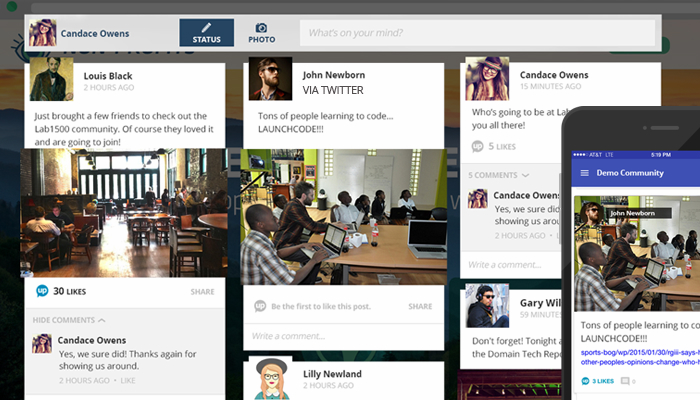
Pushup Social is at the forefront of a social media revolution—social communities that companies can actually own.
“When we first started back in 2013, people were like,”Why wouldn’t I just use Facebook?” said Dan Lohman, co-founder CEO of Pushup Social.
Now things are different. Brands on social media are increasingly feeling the squeeze from social networking platforms. Companies now have to pay Facebook simply to reach their own fans. Which raises a big question in the minds of many brands: Do I really own my social network?
St. Louis-based Pushup Social is attempting to hand back some of those controls to the brand, while solving real problems in the digital marketing industry.
How Pushup Social works
Pushup Social addresses the Catch-22 of online marketing: Companies are attempting to drive traffic toward their site in order increase conversions, while at the same time trying to build their brands–often by driving customers away from their site to social media platforms. Pushup Social wants to make it easy for companies to integrate those two goals into one by placing all your social media feed onto your web site.
“It’s a way to keep engagement on the site. It’s also gives potential customers a way to see your personal engagement with other fans, a kind of live social testimonial sampler of your brand,” said Lohman.
There are other social integration systems out there, like BuddyPress, Social Engine, or Ning, but they typically require you to rebuild your website. Pushup Social can be installed with a single line of code.
And unlike other social aggregators, users can engage with the content on a native Pushup Social platform, posting text, photos, videos.
“This is a fully functional online community, but it’s augmented by the social feeds,” said Lohnman. “You can defragment your social community.”
Side benefit: Fewer trolls
When Pushup Social originally designed their product they were worried about how to manage the bad actors
“We overengineered it for moderation,” said Lohman. “We thought that we were going to have inappropriate comments, etc. But in over 200,000 posts, I’ve yet to see an inappropriate post.”
Lohman thinks the reason for this is that when users are on your site, they behave more like guests in your home. Traditional social media platforms feel like neutral spaces, but social communities on a company website seem to add a level of decorum.
Integrating into web development platforms
Pushup Social is currently running 400 different communities to date. That experience has helped them refine and prove the value of their product. Their next step is to integrate into web building platforms like Wix, Weebly, Shopify and Big Commerce.
“We have the green light from all of those,” said Lohman. “Now it’s just a matter of doing technical integrations and launching.”
Depending on how long the integration takes, Lohman hopes the integrations will be complete by the end of the quarter.
Launching from STL
Lohman admits that the Midwest is not a typical place for social technology companies to launch. Social startups can be more challenging in the Midwest, as many investors want to see revenue up front. Pushup Social is taking an adoption first, revenue later approach.
Nevertheless, Pushup Social has found a very supportive ecosystem, raising $900,000 so far in their first round of funding. Lohman is also a 2015 Pipeline Fellow, one of the premiere regional organizations for high-growth entrepreneurs.
Lohman sees opportunities in St. Louis building bridges with other communities in the region.
“In St. Louis we’ve done a good job networking with ourselves, but historically we haven’t made many bridges, even to Kansas City,” said Lohman. “But we’re all in a very similar situation.”
—
Ryan Pendell is the Managing Editor of Silicon Prairie News.





One response to “Pushup Social brings social power back to the brands”
[…] Pushup Social brings social power back to the brands – Pushup Social addresses the Catch-22 of online marketing: Companies are attempting to drive traffic toward their site in order increase conversions, while at the same time trying to build their brands … platforms like … […]